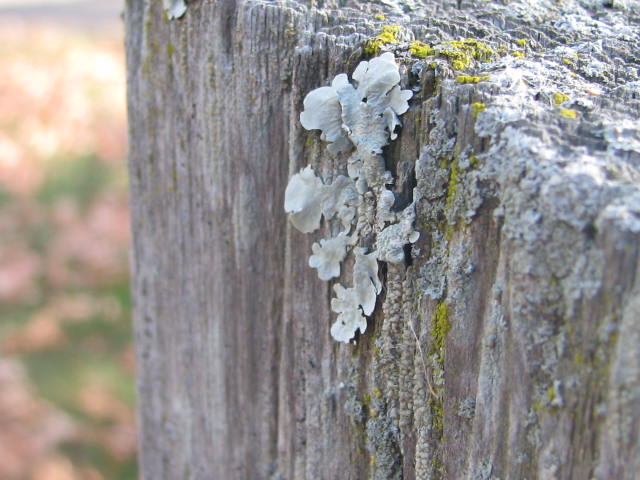Margaret Murphy
Horticulture Educator for Chippewa, Dunn, & Eau Claire Counties
UW-Madison Extension
A few years ago, a friend of mine was out in the back yard and noticed one of his trees had some odd orange growth all over its trunk. He was worried that the tree had become engulfed with some tree-eating fungus. Well, it was nothing as sci-fi as that but guessing it might be a fungus wasn’t so far off the mark. His tree had lichen growing on it.

Lichen can be a little strange looking but it’s nothing to worry about. Actually, it is a rather interesting organism. Lichen is a symbiotic union between a fungus and an alga and/or cyanobacterium. The fungus gives structure to the partnership whereas alga provides food through photosynthesis.
Thousands of lichens have been catalogued throughout the world with roughly 3,600 found in North America. Lichens are grouped based on their color and growth habit. Their color palette includes white, gray, green, red, yellow, orange, and black while their growth habit divides them into four main categories: foliose, fruticose, squamulose and crustose. In a nutshell, foliose has slightly raised, flattened leaf-like structures, fruticose is upright with more branch-like structures, squamulose has a scale-like shape and crustose is flat, forming a crust-like covering over the surface it grows on.
Lichens can thrive in areas considered too harsh for many other organisms. Despite their willingness to survive in almost any environment, there are a few habitat necessities for lichen to succeed. The first is a source of water. Lichens can obtain water from rainfall, dew, or water vapor. They cannot conserve water through extended periods of dryness. When moisture is available, they actively grow but when it is too dry, they go dormant. Sunlight is another requirement. Lichens provide much of their own food through photosynthesis.
Another deciding factor determining whether lichen can colonize an area is having a suitable substrate on which to grow. Since lichens live on top of something else, they require an undisturbed place to anchor. Trees, rocks, roof shingles and tombstones are all sites where you can commonly find them growing. While living on Cape Cod, I took long walks over the sand dunes along the beach. I always kept an eye out for the delightful little green lichen with a red cap known as ‘British Soldier’. It would grow on the weather-worn fence posts that were part of the fencing positioned to control sand erosion.
Seeing lichen is a favorable sign. It indicates that the local air quality is good. Because they absorb everything from nutrients to toxins, clean air is another essential element for lichens to flourish. Very few lichens are found in areas with high levels of air pollution.
Lichens are an important and beneficial part of our world. They provide food or shelter to many organisms. A large number of birds and insects use lichens for nesting material. Humans also have numerous uses for lichens. We put them in dyes, paints, toothpastes, deodorants and perfumes.
So, next time you are out and about, see how many different types of lichens you can find. I hope you will marvel, as I do, at how diverse, adaptable, and delightful they are. And don’t worry if you find them on your tree, lichen does not harm the tree or deprive it of nutrients.
For further information on lichen, take a look at the UW Madison-Extension fact sheet at https://pddc.wisc.edu/2021/05/28/lichens-2/ and the U.S. Forest Service website at https://www.fs.usda.gov/wildflowers/beauty/lichens/.




